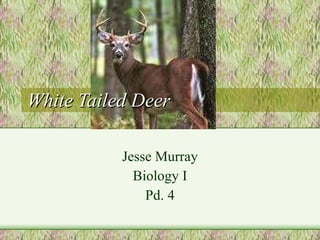The document discusses the niche and habitat of white-tailed deer. It describes their feeding habits, life cycle, predators, and role in the food web. Water quality data from a stream is analyzed, showing the stream has low pollution levels and is a healthy habitat for deer. Factors like nitrates, phosphates, pH, and dissolved oxygen are compared between the stream, marsh, and abandoned mine, finding the stream best supports the deer.








